Creative Biolabs has a tradition of commitment. To achieve efficient execution and regulatory approval, we offer careful considerations of your program for the development of a cellular or gene therapy product – now and in the future.
EXPLORE MORE HighlightsWe focus on unmet needs and develop novel cellular and gene drugs and solutions that offer significant benefits over existing options.
EXPLORE MORE HighlightsThe advent of Chimeric Antigen Receptor T-cell (CAR-T) therapies has revolutionized the field of oncology, providing new avenues for treating various forms of cancer. Our 20 years of experience in the biotechnology sector have equipped us with the expertise and technological capabilities to support the entire lifecycle of CAR-T products, from early development to commercialization.
EXPLORE MORETo accelerate advanced breakthroughs of your projects, we offer broad range of platforms which enable our clients be free to tackle problems with cutting-edge technologies from different angles and in different methods.
EXPLORE MORE HighlightsUse the resources in our library to help you understand your options and make critical decisions for your study. We offer oncolytic virus, CAR-T, and dendritic cell related documents, as well as newsletter. If you don't find the answers you're looking for, contact us for additional assistance.
EXPLORE MORE HighlightsGet a real taste and understanding of the business and culture of one of the world's great research-based cellular and gene therapy discovery and development companies.
EXPLORE MOREAll products and services are For Research Use Only and CANNOT be used in the treatment or diagnosis of disease.
Creative Biolabs provides various Anti-MUC1-related products to support global customers’ projects, please feel free to contact us for further communication.
MUC1 is a glycoprotein with extensive O-linked glycosylation of its extracellular domain. It is overexpressed in a variety of epithelial cancers and plays a crucial role in the progression of the disease. Tumor-associated MUC1 differs from the MUC1 expressed in normal cells with regard to its biochemical features, cellular distribution, and function. Based on these features of MUC1 between normal and tumor cells, MUC1 has been investigated as one of the hot targets for antibody and engineering CAR T cells for cancer therapy.
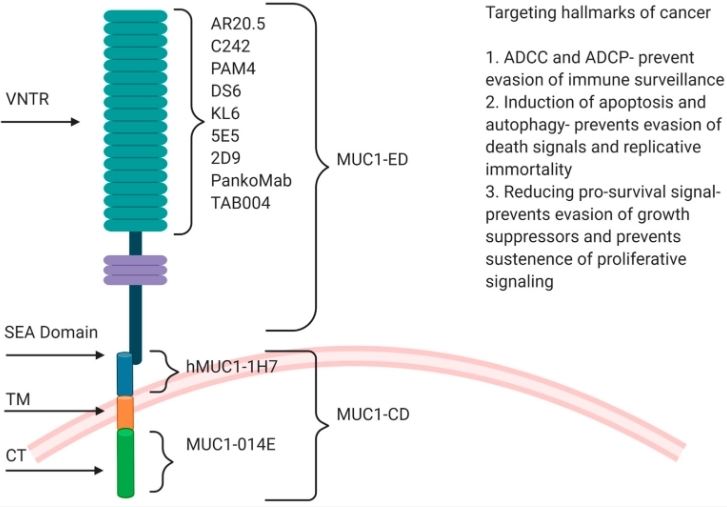 Fig.1 Schematic representation of the recognition of different domains by different antibodies.1
Fig.1 Schematic representation of the recognition of different domains by different antibodies.1
Lung cancer
Pancreas cancer
MUC1-expressing tumors
Viral infection
Anti-MUC1 CAR-T Expression Test
For CART research, Creative Biolabs is dedicated to providing several innovative CAR detection reagents for CAR expression validation. Meanwhile, we also provide a comprehensive range of assay services to support your CART projects. For example, validation of anti-MUC1 CAR expression by flow cytometry is usually a classical assay format in MUC1 CAR therapy projects, providing a lot of intuitive information to clients.
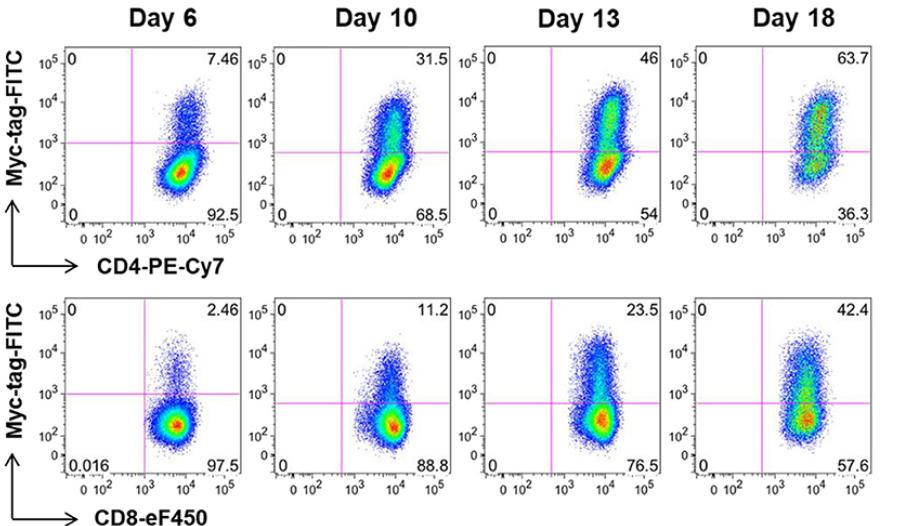 Fig.2 Anti-MUC1 CAR expression evaluation in transduced human T cells by FACS analysis of Myc-tag expression. Anti-MUC1 CAR cells were gated by CD4 or CD8 channel, and then detected Myc-tag expression.2
Fig.2 Anti-MUC1 CAR expression evaluation in transduced human T cells by FACS analysis of Myc-tag expression. Anti-MUC1 CAR cells were gated by CD4 or CD8 channel, and then detected Myc-tag expression.2
Anti-MUC1 CAR-T Cytokine Release Test
The cytokine release test is a valuable assay in CART validation and characterization, which provides valuable insights into the activated and lytic phenotype of CAR T cells. Common types of cytokine tests include IFN-γ, TNF-α, IL-2, Granzyme B, along with many other cytokines. Creative Biolabs specializes in providing comprehensive cytokine release test services for global clients by many approaches, including ELISA, CBA, and FACS staining intracellularly.
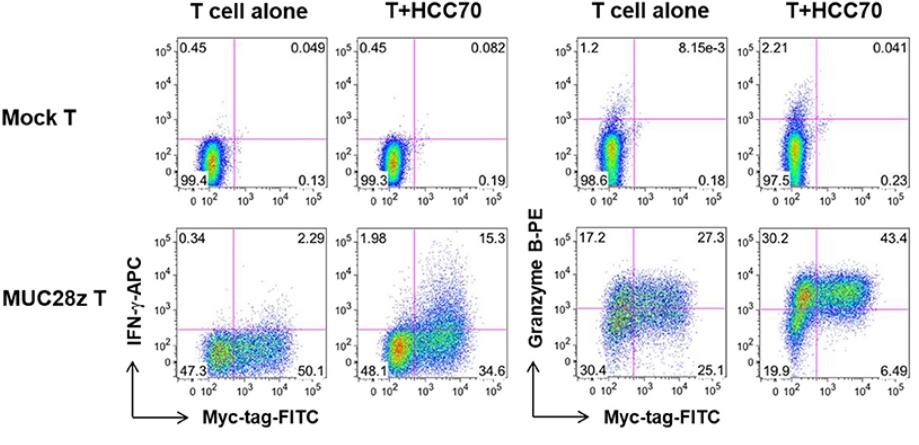 Fig.3 IFN-γ and Granzyme B secretion detection of anti-MUC1 CAR-T cells co-cultured with tMUC1high HCC70 cells by FACS staining intracellularly for IFN-γ and Granzyme B.2
Fig.3 IFN-γ and Granzyme B secretion detection of anti-MUC1 CAR-T cells co-cultured with tMUC1high HCC70 cells by FACS staining intracellularly for IFN-γ and Granzyme B.2
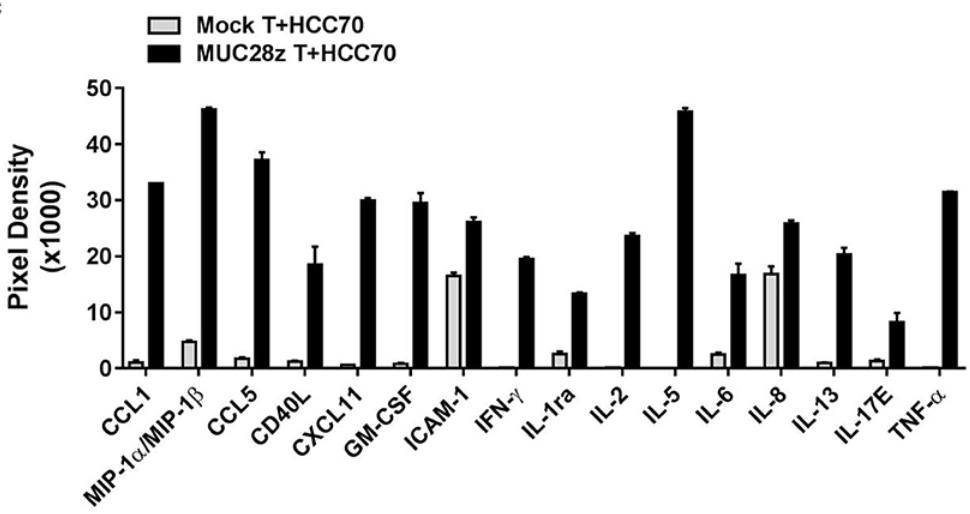 Fig.4 Cytokines panel detection of anti-MUC1 CAR-T cells co-cultured with tMUC1high HCC70 cells at E:T ratio of 2:1 by human cytokine array.2
Fig.4 Cytokines panel detection of anti-MUC1 CAR-T cells co-cultured with tMUC1high HCC70 cells at E:T ratio of 2:1 by human cytokine array.2
Anti-MUC1 CAR-T In Vitro Cytotoxicity Assay
CAR T cell-mediated tumor-killing test is an important indicator for CART research. Creative Biolabs offers in vitro cytotoxicity assay services to support the evaluation of anti-MUC1 CAR-T cell therapy by various approaches, such as radioactive chromium release method, bioluminescence method, and flow cytometry method. In the testing service, we will optimize the experimental conditions according to customers' special needs to get more desirable data results.
 Fig.5 In vitro cytotoxicity activity of anti-MUC1 CAR-T cells against TNBC tumor cells. (A) tMUC1 expression validation of several TNBC cell lines by flow cytometry. (B) In vitro cytotoxicity validation of MUC1 CAR T cells against TNBC tumor cell at E:T ratio of 5:1 for 3 days' co-culture.2
Fig.5 In vitro cytotoxicity activity of anti-MUC1 CAR-T cells against TNBC tumor cells. (A) tMUC1 expression validation of several TNBC cell lines by flow cytometry. (B) In vitro cytotoxicity validation of MUC1 CAR T cells against TNBC tumor cell at E:T ratio of 5:1 for 3 days' co-culture.2
Efficacy Test of Anti-MUC1 CAR-T
For in vivo tumor killing analysis, Creative Biolabs provides many optimized mouse models and various detection solutions to speed clients' CART research. At the same time, our in vivo services also cover a variety of phenotypic analyses on cells.
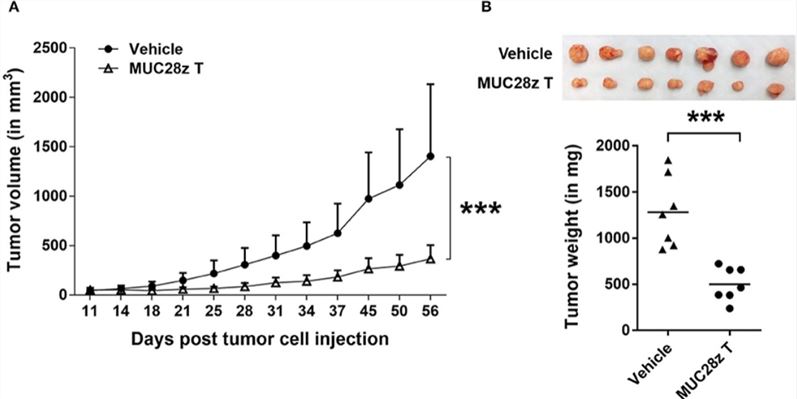 Fig.6 In vivo anti-tumor validation of MUC1 CAR-T cells against HCC70 tumor cells. (A) Anti-MUC1 CAR-T cells inhibit HCC70 tumor growth in NSG mice by a single injection in vivo. (B) Tumor weight analysis of resected tumor mass on day 57 at endpoint.2
Fig.6 In vivo anti-tumor validation of MUC1 CAR-T cells against HCC70 tumor cells. (A) Anti-MUC1 CAR-T cells inhibit HCC70 tumor growth in NSG mice by a single injection in vivo. (B) Tumor weight analysis of resected tumor mass on day 57 at endpoint.2
Toxicity Evaluation Anti-MUC1 CAR-T
In addition, Creative Biolabs also provides comprehensive solutions for the toxicity assessment of CAR-T cells to ensure the safety and efficacy of the CART cells, such as on-target toxicity assessment, and off-target toxicity assessment.
For more MU1 CAR-T related assays, please don't hesitate to contact us directly.
References
 Loading...
Loading...
| CAT | Product Name | Target Species | Antibody Clone | Antibody Host | Receptor Construction | Vector Type | Targeting Cell Type | CAR Vector Type | Inquiry & Datasheet |
| CAR-0120ZP3467 | Anti-MUC1 (VU-11D1) h(CD28-CD3ζ) CAR, pCDCAR1 | Human | VU-11D1 | Mouse | scFv-CD28-CD3ζ | Lentiviral vector | T Cell | Add to Cart Datasheet | |
| CAR-0120ZP3468 | Anti-MUC1 (VU-11D1) h(4-1BB-CD3ζ) CAR, pCDCAR1 | Human | VU-11D1 | Mouse | scFv-4-1BB-CD3ζ | Lentiviral vector | T Cell | Add to Cart Datasheet | |
| CAR-0120ZP3469 | Anti-MUC1 (V2G9) h(CD28-CD3ζ) CAR, pCDCAR1 | Human | V2G9 | Mouse | scFv-CD28-CD3ζ | Lentiviral vector | T Cell | Add to Cart Datasheet | |
| CAR-0120ZP3470 | Anti-MUC1 (V2G9) h(4-1BB-CD3ζ) CAR, pCDCAR1 | Human | V2G9 | Mouse | scFv-4-1BB-CD3ζ | Lentiviral vector | T Cell | Add to Cart Datasheet | |
| CAR-0120ZP3471 | Anti-MUC1 (U9H3) h(CD28-CD3ζ) CAR, pCDCAR1 | Human | U9H3 | Mouse | scFv-CD28-CD3ζ | Lentiviral vector | T Cell | Add to Cart Datasheet | |
| CAR-0120ZP3472 | Anti-MUC1 (U9H3) h(4-1BB-CD3ζ) CAR, pCDCAR1 | Human | U9H3 | Mouse | scFv-4-1BB-CD3ζ | Lentiviral vector | T Cell | Add to Cart Datasheet | |
| CAR-0120ZP3473 | Anti-MUC1 (VU-4H5) h(CD28-CD3ζ) CAR, pCDCAR1 | Human | VU-4H5 | Mouse | scFv-CD28-CD3ζ | Lentiviral vector | T Cell | Add to Cart Datasheet | |
| CAR-0120ZP3474 | Anti-MUC1 (VU-4H5) h(4-1BB-CD3ζ) CAR, pCDCAR1 | Human | VU-4H5 | Mouse | scFv-4-1BB-CD3ζ | Lentiviral vector | T Cell | Add to Cart Datasheet | |
| CAR-0120ZP3475 | Anti-MUC1 (SPM132) h(CD28-CD3ζ) CAR, pCDCAR1 | Human | SPM132 | Mouse | scFv-CD28-CD3ζ | Lentiviral vector | T Cell | Add to Cart Datasheet | |
| CAR-0120ZP3476 | Anti-MUC1 (SPM132) h(4-1BB-CD3ζ) CAR, pCDCAR1 | Human | SPM132 | Mouse | scFv-4-1BB-CD3ζ | Lentiviral vector | T Cell | Add to Cart Datasheet | |
| CAR-0120ZP3483 | Anti-MUC1 (VU-3C6) h(CD28-CD3ζ) CAR, pCDCAR1 | Human | VU-3C6 | Mouse | scFv-CD28-CD3ζ | Lentiviral vector | T Cell | Add to Cart Datasheet | |
| CAR-0120ZP3484 | Anti-MUC1 (VU-3C6) h(4-1BB-CD3ζ) CAR, pCDCAR1 | Human | VU-3C6 | Mouse | scFv-4-1BB-CD3ζ | Lentiviral vector | T Cell | Add to Cart Datasheet | |
| CAR-0120ZP3485 | Anti-MUC1 (SPM492) h(CD28-CD3ζ) CAR, pCDCAR1 | Human | SPM492 | Mouse | scFv-CD28-CD3ζ | Lentiviral vector | T Cell | Add to Cart Datasheet | |
| CAR-0120ZP3524 | Anti-MUC1 (149.2E6) h(4-1BB-CD3ζ) CAR, pCDCAR1 | Human | 149.2E6 | Mouse | scFv-4-1BB-CD3ζ | Lentiviral vector | T Cell | Add to Cart Datasheet | |
| CAR-0120ZP3525 | Anti-MUC1 (16A) h(CD28-CD3ζ) CAR, pCDCAR1 | Human | 16A | Mouse | scFv-CD28-CD3ζ | Lentiviral vector | T Cell | Add to Cart Datasheet | |
| CAR-0120ZP3526 | Anti-MUC1 (16A) h(4-1BB-CD3ζ) CAR, pCDCAR1 | Human | 16A | Mouse | scFv-4-1BB-CD3ζ | Lentiviral vector | T Cell | Add to Cart Datasheet | |
| CAR-0120ZP3528 | Anti-MUC1 (139H2) h(4-1BB-CD3ζ) CAR, pCDCAR1 | Human | 139H2 | Mouse | scFv-4-1BB-CD3ζ | Lentiviral vector | T Cell | Add to Cart Datasheet | |
| CAR-0120ZP3530 | Anti-MUC1 (126E7) h(4-1BB-CD3ζ) CAR, pCDCAR1 | Human | 126E7 | Mouse | scFv-4-1BB-CD3ζ | Lentiviral vector | T Cell | Add to Cart Datasheet | |
| CAR-0120ZP3531 | Anti-MUC1 (9BA5) h(CD28-CD3ζ) CAR, pCDCAR1 | Human | 9BA5 | Rabbit | scFv-CD28-CD3ζ | Lentiviral vector | T Cell | Add to Cart Datasheet | |
| CAR-0120ZP3532 | Anti-MUC1 (9BA5) h(4-1BB-CD3ζ) CAR, pCDCAR1 | Human | 9BA5 | Rabbit | scFv-4-1BB-CD3ζ | Lentiviral vector | T Cell | Add to Cart Datasheet | |
| XS-0823-LX79 | Anti-hMUC1 (M3) ICD(CD28-OX40-CD3ζ) CAR-MA, pAd5f35 Vector | Human | M3 | Adenoviral vectors | Add to Cart Datasheet |
| CAT | Product Name | Host Cell Type | Target | scFv Clone | CAR Construction | CAR Cell Type | Inquiry & Datasheet |
| CARJ-ZP188 | Anti-MUC1 (Epitumomab) h(4-1BB-CD3ζ) CAR, Jurkat Cell | T lymphocyte | MUC1 | Epitumomab | scFv-41BB-CD3ζ | Add to Cart Datasheet | |
| CARJ-ZP189 | Anti-MUC1 (Nacolomab) h(CD28-CD3ζ) CAR, Jurkat Cell | T lymphocyte | MUC1 | Nacolomab | scFv-CD28-CD3ζ | Add to Cart Datasheet | |
| CARJ-ZP190 | Anti-MUC1 (Nacolomab) h(4-1BB-CD3ζ) CAR, Jurkat Cell | T lymphocyte | MUC1 | Nacolomab | scFv-41BB-CD3ζ | Add to Cart Datasheet | |
| XS-0722-ZP2176 | Anti-MUC1 (XP76) h(CD28-CD3ζ) TSCM CAR-T Cells | TSCM CAR-T Cells | MUC1 | XP76 | scFv-CD28-CD3ζ | Add to Cart Datasheet | |
| XS-0722-ZP2177 | Anti-MUC1 (XP77) h(CD28-CD3ζ) TSCM CAR-T Cells | TSCM CAR-T Cells | MUC1 | XP77 | scFv-CD28-CD3ζ | Add to Cart Datasheet | |
| XS-0722-ZP2178 | Anti-MUC1 (XP78) h(CD28-CD3ζ) TSCM CAR-T Cells | TSCM CAR-T Cells | MUC1 | XP78 | scFv-CD28-CD3ζ | Add to Cart Datasheet | |
| XS-0722-ZP2179 | Anti-MUC1 (XP79) h(CD28-CD3ζ) TSCM CAR-T Cells | TSCM CAR-T Cells | MUC1 | XP79 | scFv-CD28-CD3ζ | Add to Cart Datasheet | |
| XS-0722-ZP2180 | Anti-MUC1 (XP80) h(CD28-CD3ζ) TSCM CAR-T Cells | TSCM CAR-T Cells | MUC1 | XP80 | scFv-CD28-CD3ζ | Add to Cart Datasheet | |
| XS-0722-ZP2181 | Anti-MUC1 (XP81) h(CD28-CD3ζ) TSCM CAR-T Cells | TSCM CAR-T Cells | MUC1 | XP81 | scFv-CD28-CD3ζ | Add to Cart Datasheet | |
| XS-0722-ZP2182 | Anti-MUC1 (XP82) h(CD28-CD3ζ) TSCM CAR-T Cells | TSCM CAR-T Cells | MUC1 | XP82 | scFv-CD28-CD3ζ | Add to Cart Datasheet | |
| XS-0722-ZP2183 | Anti-MUC1 (XP83) h(CD28-CD3ζ) TSCM CAR-T Cells | TSCM CAR-T Cells | MUC1 | XP83 | scFv-CD28-CD3ζ | Add to Cart Datasheet | |
| XS-0722-ZP2184 | Anti-MUC1 (XP84) h(CD28-CD3ζ) TSCM CAR-T Cells | TSCM CAR-T Cells | MUC1 | XP84 | scFv-CD28-CD3ζ | Add to Cart Datasheet | |
| XS-0722-ZP2185 | Anti-MUC1 (XP85) h(CD28-CD3ζ) TSCM CAR-T Cells | TSCM CAR-T Cells | MUC1 | XP85 | scFv-CD28-CD3ζ | Add to Cart Datasheet | |
| XS-0722-ZP2186 | Anti-MUC1 (XP86) h(CD28-CD3ζ) TSCM CAR-T Cells | TSCM CAR-T Cells | MUC1 | XP86 | scFv-CD28-CD3ζ | Add to Cart Datasheet | |
| XS-0722-ZP2187 | Anti-MUC1 (XP87) h(CD28-CD3ζ) TSCM CAR-T Cells | TSCM CAR-T Cells | MUC1 | XP87 | scFv-CD28-CD3ζ | Add to Cart Datasheet | |
| XS-0722-ZP2188 | Anti-MUC1 (XP88) h(CD28-CD3ζ) TSCM CAR-T Cells | TSCM CAR-T Cells | MUC1 | XP88 | scFv-CD28-CD3ζ | Add to Cart Datasheet | |
| XS-0722-ZP2189 | Anti-MUC1 (XP89) h(CD28-CD3ζ) TSCM CAR-T Cells | TSCM CAR-T Cells | MUC1 | XP89 | scFv-CD28-CD3ζ | Add to Cart Datasheet | |
| XS-0722-ZP2190 | Anti-MUC1 (XP90) h(CD28-CD3ζ) TSCM CAR-T Cells | TSCM CAR-T Cells | MUC1 | XP90 | scFv-CD28-CD3ζ | Add to Cart Datasheet | |
| XS-0722-ZP3415 | Anti-MUC1 (XP460) h(4-1BB-CD3ζ) TSCM CAR-T Cells | TSCM CAR-T Cells | MUC1 | XP460 | scFv-4-1BB-CD3ζ | Add to Cart Datasheet | |
| XS-0722-ZP3687 | Anti-MUC1 (XP732) h(4-1BB-CD3ζ) TSCM CAR-T Cells | TSCM CAR-T Cells | MUC1 | XP732 | scFv-4-1BB-CD3ζ | Add to Cart Datasheet |
| CAT | Product Name | Target Species | DMAb Clone | DMAb Host | DMAb Isotype | DMAb Cross Reactivity | Vector Name | Inquiry & Datasheet |
| DMAb-2457-FY | Anti-MUC1 DNA-encoded mAb (DMAb), pVAX1 | Human | M8C9 | Mouse | IgG | Human | pVAX1 | Add to Cart Datasheet |
| CAT | Product Name | Organism | Inquiry & Datasheet |
| CARD-LX069 | Human MUC1 CAR Detection Reagent, Fc Tag | Add to Cart Datasheet | |
| XS-0923-LX19 | APC-labeled Human MUC1 CAR Detection Reagent, His Tag | Human | Add to Cart Datasheet |
| XS-1223-LX17 | AF488-labeled Human MUC1 CAR Detection Reagent, His Tag | Human | Add to Cart Datasheet |
| CAT | Product Name | Target Species | TCR Clone | Epitope | Allele | Vector Type | Inquiry & Datasheet |
| TLA-CA-025PZ | Anti-MUC1 (LLLTVLTVV) TCR-Like CAR [scFv (M3A1)-28ζ], HLA-A2-Restricted | Human | Melanoma | LLLTVLTVV | HLA-A2 | Lentiviral vector | Add to Cart Datasheet |
| TLA-CA-026PZ | Anti-MUC1 (LLLTVLTVV) TCR-Like CAR [scFv (M3B8)-28ζ], HLA-A2-Restricted | Human | Melanoma | LLLTVLTVV | HLA-A2 | Lentiviral vector | Add to Cart Datasheet |
| TLA-CA-210PZ | Anti-MUC1 (LLLTVLTVV) TCR-Like CAR [scFv (M3A1)-BBζ], HLA-A2-Restricted | Human | Melanoma | LLLTVLTVV | HLA-A2 | Lentiviral vector | Add to Cart Datasheet |
| TLA-CA-211PZ | Anti-MUC1 (LLLTVLTVV) TCR-Like CAR [scFv (M3B8)-BBζ], HLA-A2-Restricted | Human | Melanoma | LLLTVLTVV | HLA-A2 | Lentiviral vector | Add to Cart Datasheet |
| TLA-CA-266PZ | Anti-MUC1 (LLLTVLTVV) TCR-Like CAR [scFv (M2B1)-BBζ], HLA-A*0201-Restricted | Human | Breast cancer | LLLTVLTVV | HLA-A*0201 | Lentiviral vector | Add to Cart Datasheet |
| TLA-CA-267PZ | Anti-MUC1 (LLLTVLTVV) TCR-Like CAR [scFv (M2F5)-BBζ], HLA-A*0201-Restricted | Human | Breast cancer | LLLTVLTVV | HLA-A*0201 | Lentiviral vector | Add to Cart Datasheet |
| TLA-CA-268PZ | Anti-MUC1 (LLLTVLTVV) TCR-Like CAR [scFv (M3A1)-BBζ], HLA-A*0201-Restricted | Human | Breast cancer | LLLTVLTVV | HLA-A*0201 | Lentiviral vector | Add to Cart Datasheet |
| TLA-CA-269PZ | Anti-MUC1 (LLLTVLTVV) TCR-Like CAR [scFv (M3B8)-BBζ], HLA-A*0201-Restricted | Human | Breast cancer | LLLTVLTVV | HLA-A*0201 | Lentiviral vector | Add to Cart Datasheet |
| TLA-CA-270PZ | Anti-MUC1 (LLLTVLTVV) TCR-Like CAR [scFv (M3C8)-BBζ], HLA-A*0201-Restricted | Human | Breast cancer | LLLTVLTVV | HLA-A*0201 | Lentiviral vector | Add to Cart Datasheet |
| CAT | Product Name | Target Species | Antibody Clone | Host | Hinge | TM | ICD | Inquiry & Datasheet |
| CARMA-W1234 | Anti-MUC1 (Clivatuzumab) ICD(Megf10) CAR-MA Plasmid, pCDCAR1 | Human | Clivatuzumab | Humanized | CD8 | CD8 | Megf10 | Add to Cart Datasheet |
| CARMA-W1238 | Anti-MUC1 (Sontuzumab) ICD(CD86+FcγRI) CAR-MA Plasmid, pCDCAR1 | Human | Sontuzumab | Humanized | CD8 | CD8 | CD86+FcγRI | Add to Cart Datasheet |
| CARMA-W1239 | Anti-MUC1 (Sontuzumab) ICD(CD3ζ) CAR-MA Plasmid, pCDCAR1 | Human | Sontuzumab | Humanized | CD8 | CD8 | CD3ζ | Add to Cart Datasheet |
| CARMA-W1242 | Anti-MUC1 (Sontuzumab) ICD(FcRɣ+PI3K) CAR-MA Plasmid, pCDCAR1 | Human | Sontuzumab | Humanized | CD8 | CD8 | FcRɣ+PI3K | Add to Cart Datasheet |
| CARMA-W1258 | Anti-MUC1 (hPAM4) ICD(Megf10) CAR-MA Plasmid, pCDCAR1 | Human | hPAM4 | Humanized | CD8 | CD8 | Megf10 | Add to Cart Datasheet |
| CARMA-W1259 | Anti-MUC1 (hPAM4) ICD(FcRɣ) CAR-MA Plasmid, pCDCAR1 | Human | hPAM4 | Humanized | CD8 | CD8 | FcRɣ | Add to Cart Datasheet |
| CARMA-W1260 | Anti-MUC1 (hPAM4) ICD(FcRɣ+PI3K) CAR-MA Plasmid, pCDCAR1 | Human | hPAM4 | Humanized | CD8 | CD8 | FcRɣ+PI3K | Add to Cart Datasheet |
| CARMA-W1261 | Anti-MUC1 (SM3) ICD(CD147) CAR-MA Plasmid, pCDCAR1 | Human | SM3 | Mouse | IgG1 | CD147 | CD147 | Add to Cart Datasheet |
| CARMA-W1262 | Anti-MUC1 (SM3) ICD(CD86+FcγRI) CAR-MA Plasmid, pCDCAR1 | Human | SM3 | Mouse | CD8 | CD8 | CD86+FcγRI | Add to Cart Datasheet |
| CARMA-W1263 | Anti-MUC1 (SM3) ICD(CD3ζ) CAR-MA Plasmid, pCDCAR1 | Human | SM3 | Mouse | CD8 | CD8 | CD3ζ | Add to Cart Datasheet |
| CARMA-W1264 | Anti-MUC1 (SM3) ICD(Megf10) CAR-MA Plasmid, pCDCAR1 | Human | SM3 | Mouse | CD8 | CD8 | Megf10 | Add to Cart Datasheet |
| CARMA-W1265 | Anti-MUC1 (SM3) ICD(FcRɣ) CAR-MA Plasmid, pCDCAR1 | Human | SM3 | Mouse | CD8 | CD8 | FcRɣ | Add to Cart Datasheet |
| CARMA-W1266 | Anti-MUC1 (SM3) ICD(FcRɣ+PI3K) CAR-MA Plasmid, pCDCAR1 | Human | SM3 | Mouse | CD8 | CD8 | FcRɣ+PI3K | Add to Cart Datasheet |
| CARMA-W1267 | Anti-MUC1 (HMFG2) ICD(CD147) CAR-MA Plasmid, pCDCAR1 | Human | HMFG2 | Mouse | IgG1 | CD147 | CD147 | Add to Cart Datasheet |
| CARMA-W1268 | Anti-MUC1 (HMFG2) ICD(CD86+FcγRI) CAR-MA Plasmid, pCDCAR1 | Human | HMFG2 | Mouse | CD8 | CD8 | CD86+FcγRI | Add to Cart Datasheet |
| CARMA-W1269 | Anti-MUC1 (HMFG2) ICD(CD3ζ) CAR-MA Plasmid, pCDCAR1 | Human | HMFG2 | Mouse | CD8 | CD8 | CD3ζ | Add to Cart Datasheet |
| CARMA-W1270 | Anti-MUC1 (HMFG2) ICD(Megf10) CAR-MA Plasmid, pCDCAR1 | Human | HMFG2 | Mouse | CD8 | CD8 | Megf10 | Add to Cart Datasheet |
| CARMA-W1271 | Anti-MUC1 (HMFG2) ICD(FcRɣ) CAR-MA Plasmid, pCDCAR1 | Human | HMFG2 | Mouse | CD8 | CD8 | FcRɣ | Add to Cart Datasheet |
| CARMA-W1272 | Anti-MUC1 (HMFG2) ICD(FcRɣ+PI3K) CAR-MA Plasmid, pCDCAR1 | Human | HMFG2 | Mouse | CD8 | CD8 | FcRɣ+PI3K | Add to Cart Datasheet |
| CAT | Product Name | Target Species | Antibody Clone | Host | Hinge | TM | ICD | Inquiry & Datasheet |
| CARTHP-W1231 | Anti-MUC1 (Clivatuzumab) ICD(CD147) CAR THP1 Cell Line | Human | Clivatuzumab | Humanized | IgG1 | CD147 | CD147 | Add to Cart Datasheet |
| CARTHP-W1232 | Anti-MUC1 (Clivatuzumab) ICD(CD86+FcγRI) CAR THP1 Cell Line | Human | Clivatuzumab | Humanized | CD8 | CD8 | CD86+FcγRI | Add to Cart Datasheet |
| CARTHP-W1233 | Anti-MUC1 (Clivatuzumab) ICD(CD3ζ) CAR THP1 Cell Line | Human | Clivatuzumab | Humanized | CD8 | CD8 | CD3ζ | Add to Cart Datasheet |
| CARTHP-W1234 | Anti-MUC1 (Clivatuzumab) ICD(Megf10) CAR THP1 Cell Line | Human | Clivatuzumab | Humanized | CD8 | CD8 | Megf10 | Add to Cart Datasheet |
| CARTHP-W1235 | Anti-MUC1 (Clivatuzumab) ICD(FcRɣ) CAR THP1 Cell Line | Human | Clivatuzumab | Humanized | CD8 | CD8 | FcRɣ | Add to Cart Datasheet |
| CARTHP-W1236 | Anti-MUC1 (Clivatuzumab) ICD(FcRɣ+PI3K) CAR THP1 Cell Line | Human | Clivatuzumab | Humanized | CD8 | CD8 | FcRɣ+PI3K | Add to Cart Datasheet |
| CARTHP-W1237 | Anti-MUC1 (Sontuzumab) ICD(CD147) CAR THP1 Cell Line | Human | Sontuzumab | Humanized | IgG1 | CD147 | CD147 | Add to Cart Datasheet |
| CARTHP-W1238 | Anti-MUC1 (Sontuzumab) ICD(CD86+FcγRI) CAR THP1 Cell Line | Human | Sontuzumab | Humanized | CD8 | CD8 | CD86+FcγRI | Add to Cart Datasheet |
| CARTHP-W1239 | Anti-MUC1 (Sontuzumab) ICD(CD3ζ) CAR THP1 Cell Line | Human | Sontuzumab | Humanized | CD8 | CD8 | CD3ζ | Add to Cart Datasheet |
| CARTHP-W1240 | Anti-MUC1 (Sontuzumab) ICD(Megf10) CAR THP1 Cell Line | Human | Sontuzumab | Humanized | CD8 | CD8 | Megf10 | Add to Cart Datasheet |
| CARTHP-W1261 | Anti-MUC1 (SM3) ICD(CD147) CAR THP1 Cell Line | Human | SM3 | Mouse | IgG1 | CD147 | CD147 | Add to Cart Datasheet |
| CARTHP-W1262 | Anti-MUC1 (SM3) ICD(CD86+FcγRI) CAR THP1 Cell Line | Human | SM3 | Mouse | CD8 | CD8 | CD86+FcγRI | Add to Cart Datasheet |
| CARTHP-W1263 | Anti-MUC1 (SM3) ICD(CD3ζ) CAR THP1 Cell Line | Human | SM3 | Mouse | CD8 | CD8 | CD3ζ | Add to Cart Datasheet |
| CARTHP-W1264 | Anti-MUC1 (SM3) ICD(Megf10) CAR THP1 Cell Line | Human | SM3 | Mouse | CD8 | CD8 | Megf10 | Add to Cart Datasheet |
| CARTHP-W1265 | Anti-MUC1 (SM3) ICD(FcRɣ) CAR THP1 Cell Line | Human | SM3 | Mouse | CD8 | CD8 | FcRɣ | Add to Cart Datasheet |
| CARTHP-W1266 | Anti-MUC1 (SM3) ICD(FcRɣ+PI3K) CAR THP1 Cell Line | Human | SM3 | Mouse | CD8 | CD8 | FcRɣ+PI3K | Add to Cart Datasheet |
| CARTHP-W1267 | Anti-MUC1 (HMFG2) ICD(CD147) CAR THP1 Cell Line | Human | HMFG2 | Mouse | IgG1 | CD147 | CD147 | Add to Cart Datasheet |
| CARTHP-W1268 | Anti-MUC1 (HMFG2) ICD(CD86+FcγRI) CAR THP1 Cell Line | Human | HMFG2 | Mouse | CD8 | CD8 | CD86+FcγRI | Add to Cart Datasheet |
| CARTHP-W1269 | Anti-MUC1 (HMFG2) ICD(CD3ζ) CAR THP1 Cell Line | Human | HMFG2 | Mouse | CD8 | CD8 | CD3ζ | Add to Cart Datasheet |
| CARTHP-W1270 | Anti-MUC1 (HMFG2) ICD(Megf10) CAR THP1 Cell Line | Human | HMFG2 | Mouse | CD8 | CD8 | Megf10 | Add to Cart Datasheet |
| CAT | Product Name | Target Species | scFv Clone | Host | CAR Vector Name | CAR Vector Type | Targeting Diseases | Inquiry & Datasheet |
| MCAR-P153 | Anti-MUC1 (Clivatuzumab) h(CD28-CD3ζ) CAR-T Cells [Humanized Mouse (CD34+ HSC)] | Human | Clivatuzumab | Humanized | pCDCAR1 | Lentiviral vector | Colorectal cancer | Add to Cart Datasheet |
| MCAR-P154 | Anti-MUC1 (Clivatuzumab) h(4-1BB-CD3ζ) CAR-T Cells [Humanized Mouse (CD34+ HSC)] | Human | Clivatuzumab | Humanized | pCDCAR1 | Lentiviral vector | Colorectal cancer | Add to Cart Datasheet |
| MCAR-P155 | Anti-MUC1 (Sontuzumab) h(CD28-CD3ζ) CAR-T Cells [Humanized Mouse (CD34+ HSC)] | Human | Sontuzumab | Mouse | pCDCAR1 | Lentiviral vector | Colorectal cancer | Add to Cart Datasheet |
| MCAR-P156 | Anti-MUC1 (Sontuzumab) h(4-1BB-CD3ζ) CAR-T Cells [Humanized Mouse (CD34+ HSC)] | Human | Sontuzumab | Mouse | pCDCAR1 | Lentiviral vector | Colorectal cancer | Add to Cart Datasheet |
| MCAR-P157 | Anti-MUC1 (Pemtumomab) h(CD28-CD3ζ) CAR-T Cells [Humanized Mouse (CD34+ HSC)] | Human | Pemtumomab | Mouse | pCDCAR1 | Lentiviral vector | Colorectal cancer | Add to Cart Datasheet |
| MCAR-P158 | Anti-MUC1 (Pemtumomab) h(4-1BB-CD3ζ) CAR-T Cells [Humanized Mouse (CD34+ HSC)] | Human | Pemtumomab | Mouse | pCDCAR1 | Lentiviral vector | Colorectal cancer | Add to Cart Datasheet |
| MCAR-P159 | Anti-MUC1 (PankoMab) h(CD28-CD3ζ) CAR-T Cells [Humanized Mouse (CD34+ HSC)] | Human | PankoMab | Mouse | pCDCAR1 | Lentiviral vector | Colorectal cancer | Add to Cart Datasheet |
| MCAR-P160 | Anti-MUC1 (PankoMab) h(4-1BB-CD3ζ) CAR-T Cells [Humanized Mouse (CD34+ HSC)] | Human | PankoMab | Mouse | pCDCAR1 | Lentiviral vector | Colorectal cancer | Add to Cart Datasheet |
| MCAR-P161 | Anti-MUC1 (5E5) h(CD28-CD3ζ) CAR-T Cells [Humanized Mouse (CD34+ HSC)] | Human | 5E5 | Mouse | pCDCAR1 | Lentiviral vector | Colorectal cancer | Add to Cart Datasheet |
| MCAR-P162 | Anti-MUC1 (5E5) h(4-1BB-CD3ζ) CAR-T Cells [Humanized Mouse (CD34+ HSC)] | Human | 5E5 | Mouse | pCDCAR1 | Lentiviral vector | Colorectal cancer | Add to Cart Datasheet |
| MCAR-P163 | Anti-MUC1 (SN-102) h(CD28-CD3ζ) CAR-T Cells [Humanized Mouse (CD34+ HSC)] | Human | SN-102 | Mouse | pCDCAR1 | Lentiviral vector | Colorectal cancer | Add to Cart Datasheet |
| MCAR-P164 | Anti-MUC1 (SN-102) h(4-1BB-CD3ζ) CAR-T Cells [Humanized Mouse (CD34+ HSC)] | Human | SN-102 | Mouse | pCDCAR1 | Lentiviral vector | Colorectal cancer | Add to Cart Datasheet |
| MCAR-P165 | Anti-MUC1 (SN-101) h(CD28-CD3ζ) CAR-T Cells [Humanized Mouse (CD34+ HSC)] | Human | SN-101 | Mouse | pCDCAR1 | Lentiviral vector | Colorectal cancer | Add to Cart Datasheet |
| MCAR-P166 | Anti-MUC1 (SN-101) h(4-1BB-CD3ζ) CAR-T Cells [Humanized Mouse (CD34+ HSC)] | Human | SN-101 | Mouse | pCDCAR1 | Lentiviral vector | Colorectal cancer | Add to Cart Datasheet |
| MCAR-P167 | Anti-MUC1 (2D9) h(CD28-CD3ζ) CAR-T Cells [Humanized Mouse (CD34+ HSC)] | Human | 2D9 | Mouse | pCDCAR1 | Lentiviral vector | Colorectal cancer | Add to Cart Datasheet |
| MCAR-P168 | Anti-MUC1 (2D9) h(4-1BB-CD3ζ) CAR-T Cells [Humanized Mouse (CD34+ HSC)] | Human | 2D9 | Mouse | pCDCAR1 | Lentiviral vector | Colorectal cancer | Add to Cart Datasheet |
| MCAR-P173 | Anti-MUC1 (2H11) h(CD28-CD3ζ) CAR-T Cells [Humanized Mouse (CD34+ HSC)] | Human | 2H11 | Mouse | pCDCAR1 | Lentiviral vector | Colorectal cancer | Add to Cart Datasheet |
| MCAR-P174 | Anti-MUC1 (2H11) h(4-1BB-CD3ζ) CAR-T Cells [Humanized Mouse (CD34+ HSC)] | Human | 2H11 | Mouse | pCDCAR1 | Lentiviral vector | Colorectal cancer | Add to Cart Datasheet |
| MCAR-P175 | Anti-MUC1 (DMB5F3) h(CD28-CD3ζ) CAR-T Cells [Humanized Mouse (CD34+ HSC)] | Human | DMB5F3 | Humanized | pCDCAR1 | Lentiviral vector | Colorectal cancer | Add to Cart Datasheet |
| MCAR-P1179 | Anti-MUC1 (5-24) h(4-1BB-CD3ζ) CAR-T Cells [Mouse CAR-T Cells] | Mouse | 5-24 | Camel | pCDCAR1 | Lentiviral vector | Colorectal cancer | Add to Cart Datasheet |
| CAT | Product Name | Target Species | TCR Clone | Host Species | Epitope | Allele | Inquiry & Datasheet |
| TCR-LA-ZP081 | Anti-MUC1 (LLLTVLTVV) TCR-Like Antibody (M2B1), HLA-A*0201-Restricted | Human | M2B1 | LLLTVLTVV | HLA-A*0201 | Add to Cart Datasheet | |
| TCR-LA-ZP082 | Anti-MUC1 (LLLTVLTVV) TCR-Like Antibody (M2F5), HLA-A*0201-Restricted | Human | M2F5 | LLLTVLTVV | HLA-A*0201 | Add to Cart Datasheet | |
| TCR-LA-ZP083 | Anti-MUC1 (LLLTVLTVV) TCR-Like Antibody (M3A1), HLA-A*0201-Restricted | Human | M3A1 | LLLTVLTVV | HLA-A*0201 | Add to Cart Datasheet | |
| TCR-LA-ZP084 | Anti-MUC1 (LLLTVLTVV) TCR-Like Antibody (M3B8), HLA-A*0201-Restricted | Human | M3B8 | LLLTVLTVV | HLA-A*0201 | Add to Cart Datasheet | |
| TCR-LA-ZP085 | Anti-MUC1 (LLLTVLTVV) TCR-Like Antibody (M3C8), HLA-A*0201-Restricted | Human | M3C8 | LLLTVLTVV | HLA-A*0201 | Add to Cart Datasheet |
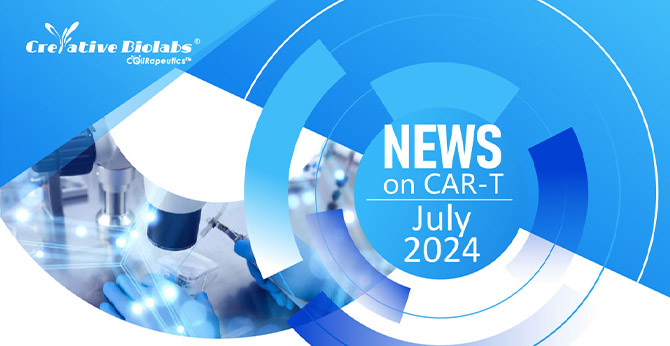 NEWSLETTER
NEWSLETTER
The latest newsletter to introduce the latest breaking information, our site updates, field and other scientific news, important events, and insights from industry leaders
LEARN MORE NEWSLETTER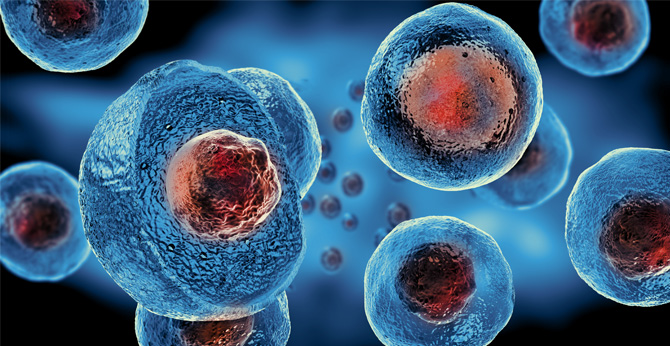 NEW SOLUTION
NEW SOLUTION
CellRapeutics™ In Vivo Cell Engineering: One-stop in vivo T/B/NK cell and macrophage engineering services covering vectors construction to function verification.
LEARN MORE SOLUTION NOVEL TECHNOLOGY
NOVEL TECHNOLOGY
Silence™ CAR-T Cell: A novel platform to enhance CAR-T cell immunotherapy by combining RNAi technology to suppress genes that may impede CAR functionality.
LEARN MORE NOVEL TECHNOLOGY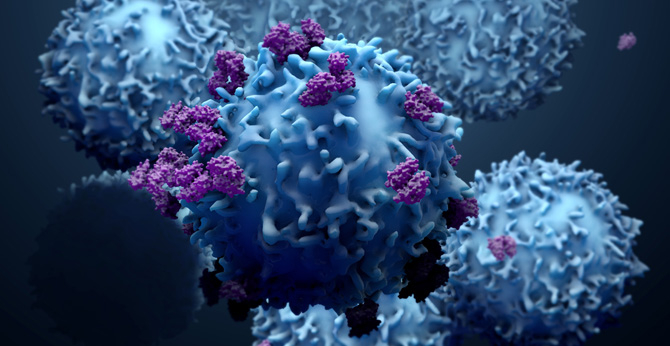 NEW SOLUTION
NEW SOLUTION
Canine CAR-T Therapy Development: From early target discovery, CAR design and construction, cell culture, and transfection, to in vitro and in vivo function validation.
LEARN MORE SOLUTION



